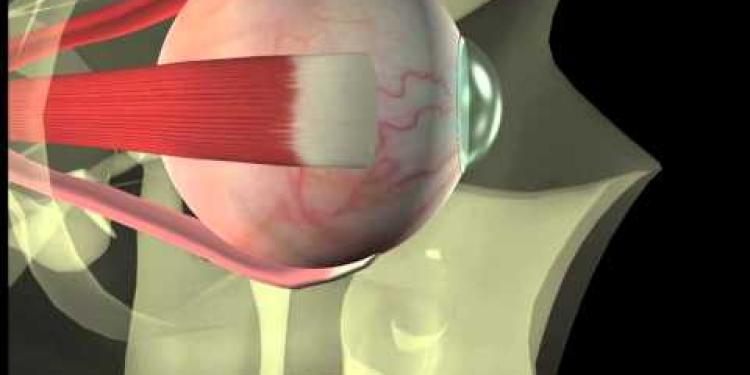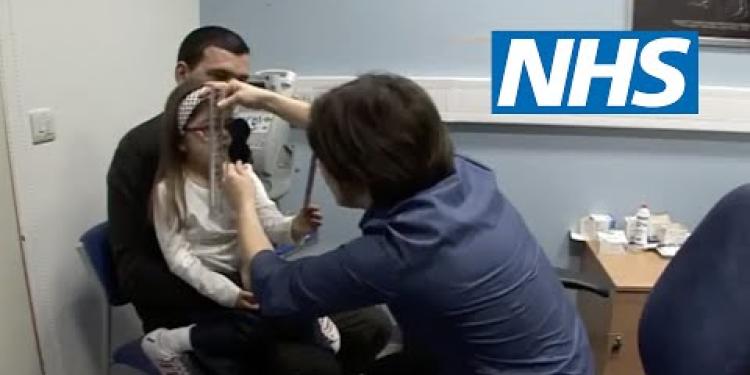Important Information On Using This Service
- Ergsy carefully checks the information in the videos we provide here.
- Videos shown by YouTube after a video has completed have NOT been reviewed by ERGSY.
- To view, click the arrow in the center of the video.
Using Subtitles and Closed Captions
- Most of the videos you find here will have subtitles and/or closed captions available.
- You may need to turn these on and choose your preferred language.
Turn Captions On or Off
- Go to the video you'd like to watch.
- If closed captions (CC) are available, settings will be visible on the bottom right of the video player.
- To turn on captions, click settings.
- To turn off captions, click settings again.
Find A Professional
Videos from Ergsy search
Thyroid Eye Disease - Squint Surgery
Introduction to Thyroid Eye Disease
Thyroid Eye Disease (TED) is an autoimmune condition associated with thyroid disorders such as Graves' disease. It can cause inflammation, swelling, and a range of eye-related symptoms, including double vision. In severe cases, TED can lead to the misalignment of the eyes, known as strabismus or squint.
What is Squint Surgery?
Squint surgery, also known as strabismus surgery, is a procedure to correct the alignment of the eyes. This surgery is performed to improve eye coordination and relieve double vision. It involves tightening or loosening the muscles around the eyes to reposition them appropriately.
Preoperative Assessment
Before the operation, a thorough assessment is essential. This includes a full eye examination, imaging studies, and measurements of the misalignment. The surgeon will review the patient's medical history and discuss potential risks and benefits of the procedure.
The Surgical Procedure
The operation is typically done under general anaesthesia, although local anaesthesia may be used in some cases. The surgeon makes small incisions in the tissue covering the eye. Depending on the need, the eye muscles are either shortened (tightened) or lengthened (weakened) to correct the eyes' alignment. The procedure usually lasts 60 to 90 minutes.
Postoperative Care
After the surgery, patients may experience mild discomfort, redness, and swelling. It is normal to have blurred vision temporarily. The doctor will prescribe medication to prevent infection and manage pain. Follow-up appointments are crucial to monitor healing and ensure the success of the surgery.
Recovery and Results
Recovery time varies, but most patients return to normal activities within a week. Squint surgery has a high success rate, with many patients experiencing significant improvement in eye alignment and reduction in double vision. In some cases, additional surgeries may be necessary for optimal results.
Where to Get Treatment in the UK
Many hospitals and clinics across the UK offer squint surgery, including NHS and private practices. It is important to choose a specialist with experience in treating Thyroid Eye Disease. Consulting with your GP for a referral to an ophthalmologist is a good starting point.
Conclusion
Squint surgery for Thyroid Eye Disease can significantly enhance the quality of life for affected individuals. Proper assessment, skilled surgical intervention, and diligent postoperative care are critical components for achieving the best outcomes.
Frequently Asked Questions
What is squint surgery for Thyroid Eye Disease?
Squint surgery for Thyroid Eye Disease aims to correct misalignment of the eyes caused by the condition, improving both visual function and appearance.
Who is eligible for squint surgery?
Patients with stable Thyroid Eye Disease who have persistent eye misalignment despite non-surgical treatments may be eligible for squint surgery.
How is squint surgery performed?
Squint surgery involves the adjustment of the muscles around the eye to correct their position. This can involve tightening or loosening the eye muscles.
Is squint surgery for Thyroid Eye Disease effective?
Yes, squint surgery can be effective in improving eye alignment, although the result may vary depending on the severity of the misalignment and other factors.
What type of anaesthesia is used during the surgery?
Squint surgery is generally performed under general anaesthesia to ensure the patient remains comfortable and still during the procedure.
How long does the surgery take?
The surgery usually takes about 1 to 2 hours, but this can vary depending on the complexity of the individual case.
What can I expect during the recovery period?
Post-surgery, patients may experience some discomfort, redness, and swelling. These symptoms usually resolve within a few weeks. Follow-up appointments are necessary to monitor healing.
Are there risks associated with squint surgery?
As with any surgery, there are risks such as infection, bleeding, or over-correction/under-correction of the eye alignment. Discuss these risks with your surgeon.
How do I prepare for squint surgery?
Your surgeon will provide specific pre-operative instructions, which may include fasting before the procedure and stopping certain medications.
Will I need glasses after squint surgery?
Many patients may still need glasses or contact lenses after surgery, especially if they had them before. Surgery corrects misalignment, not refractive errors.
Can the eye misalignment return after surgery?
There's a possibility that misalignment can recur, as the muscles and condition can still change over time. Further treatment or surgery might be necessary.
Will I experience double vision after the surgery?
Some patients might experience double vision temporarily while the brain and eyes adjust. Persistent double vision should be reported to your surgeon.
When can I return to normal activities after the surgery?
Most patients can resume normal, non-strenuous activities a few days after surgery. However, you should avoid heavy lifting or vigorous activities for a few weeks.
Will there be visible scars after the surgery?
Incisions for squint surgery are typically small and made in the natural creases of the eye. Visible scarring is generally minimal.
How do I choose a surgeon for squint surgery?
It's important to choose a qualified and experienced ophthalmic surgeon, preferably one who specialises in Thyroid Eye Disease and strabismus (squint) surgery.
Useful Links
Useful links from: Childhood squint | NHS
- NHS - Childhood Squint Official NHS page providing detailed information on symptoms, causes, diagnosis, and treatment of childhood squint.
- Royal National Institute of Blind People (RNIB) - Strabismus RNIB's guide to understanding strabismus, commonly known as squint, in children, including the effects on vision and available treatments.
- Amblyopia and Strabismus - Children's Eye Care Children's Eye Care UK provides information on amblyopia and strabismus including diagnosis, treatment options, and patient care.
- Contact - Support for Families with Disabled Children Contact is a UK charity that offers advice, information, and support for families with disabled children, including those with squint, strabismus, and amblyopia.
Have you found an error, or do you have a link or some information you would like to share? Please let us know using the form below.
- Ergsy carfully checks the information in the videos we provide here.
- Videos shown by Youtube after a video has completed, have NOT been reviewed by ERGSY.
- To view, click the arrow in centre of video.
- Most of the videos you find here will have subtitles and/or closed captions available.
- You may need to turn these on, and choose your preferred language.
- Go to the video you'd like to watch.
- If closed captions (CC) are available, settings will be visible on the bottom right of the video player.
- To turn on Captions, click settings .
- To turn off Captions, click settings again.

